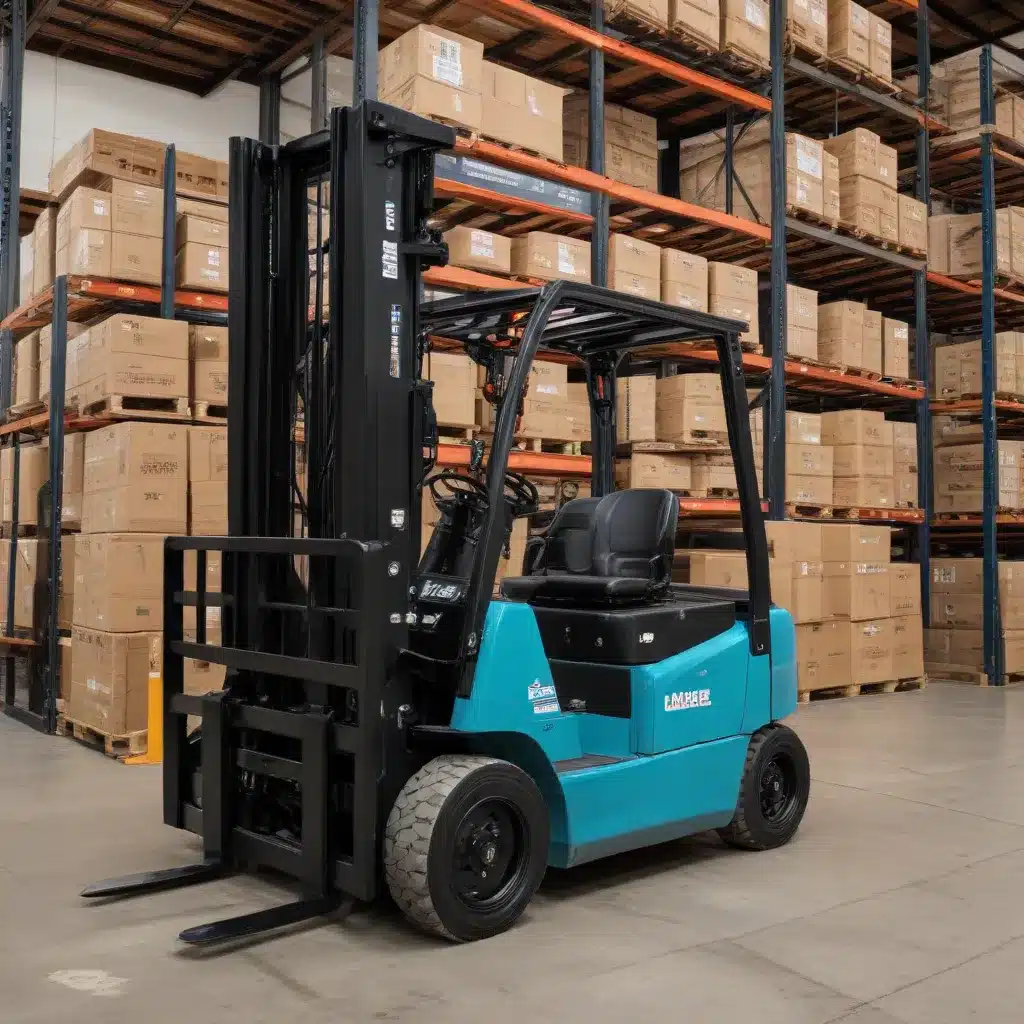
The Shift Towards Electrification in Forklift Operations
As the global push for sustainability and emission reductions intensifies, the material handling industry is undergoing a transformative shift towards electrification. Driven by regulations, technological advancements, and the need for eco-friendly solutions, forklift fleet owners are increasingly embracing battery-powered equipment to meet their operational demands.
However, the transition to electric forklifts brings with it a unique set of challenges, particularly when it comes to managing battery degradation and replacement. In this comprehensive article, we will explore the strategies and best practices for addressing these critical issues, ensuring your forklift fleet remains efficient, reliable, and environmentally responsible.
Understanding Battery Degradation in Electric Forklifts
The heart of an electric forklift’s performance lies in its battery system. These advanced batteries are designed to provide extended service life, but they are not immune to the effects of degradation over time. Several factors can contribute to battery degradation, including:
- Climate and Temperature Variations: Extreme temperatures, both hot and cold, can accelerate the aging process of forklift batteries, leading to reduced capacity and shorter lifespan.
- Charging and Discharging Patterns: Frequent deep discharges, rapid charging, and overcharging can all take a toll on battery health, reducing their overall performance and longevity.
- Battery Chemistry and Design: The specific battery chemistry and engineering employed in the forklift’s battery pack can also play a role in its susceptibility to degradation.
- Usage and Duty Cycles: The intensity and duration of forklift operations, as well as the loads being handled, can impact the rate at which the battery degrades.
Understanding these factors is crucial for developing effective strategies to mitigate battery degradation and ensure the long-term viability of your electric forklift fleet.
Strategies for Addressing Battery Degradation
To tackle the challenge of battery degradation, forklift fleet managers can implement a comprehensive approach that combines proactive maintenance, advanced battery management, and strategic replacement planning.
1. Proactive Maintenance and Monitoring
Implementing a robust maintenance regimen is essential for maximizing the lifespan of your forklift batteries. This includes:
- Regular Battery Condition Assessments: Regularly monitoring the battery’s state of health, capacity, and internal resistance can help identify potential issues before they become critical.
- Proper Charging and Cooling Practices: Ensuring that batteries are charged and cooled according to the manufacturer’s recommendations can help prevent overheating and premature degradation.
- Battery Rotation and Equalization: Rotating the use of batteries within your fleet and performing periodic equalization charges can help maintain balanced capacity and extend overall battery life.
2. Advanced Battery Management Systems
Leveraging the latest battery management technologies can provide valuable insights and control mechanisms to prolong battery performance. These systems typically include:
- State-of-Health Monitoring: Advanced sensors and algorithms that continuously track the battery’s health, providing early warning signs of degradation.
- Intelligent Charging and Discharging Protocols: Automated charging and discharging routines that optimize battery usage and minimize stress on the cells.
- Thermal Management: Integrated cooling systems that regulate battery temperatures, protecting the cells from harmful extremes.
By implementing these advanced battery management strategies, you can extend the lifespan of your forklift batteries and minimize the need for premature replacements.
3. Strategic Replacement Planning
Despite proactive maintenance and cutting-edge battery management, forklift batteries will eventually reach the end of their useful life. Developing a strategic replacement plan can help you manage this transition seamlessly and cost-effectively. Consider the following:
- Tracking Battery Degradation Trends: Closely monitoring the performance and degradation patterns of your forklift batteries can help you anticipate replacement needs and budget accordingly.
- Exploring Reuse and Recycling Options: As batteries reach the end of their service in your forklift fleet, explore opportunities for reuse in stationary energy storage applications or recycling to recover valuable materials.
- Leveraging Incentives and Regulations: Stay informed about government incentives, regulations, and industry initiatives that may support your transition to more sustainable battery technologies or enable cost-effective replacement strategies.
By adopting a holistic approach to battery management, you can ensure the long-term viability and environmental benefits of your electric forklift fleet.
Forklift Fleet Electrification: A Sustainable Future
The shift towards forklift fleet electrification is not merely a trend, but a strategic imperative driven by the need for cleaner, more efficient material handling operations. By addressing the challenges of battery degradation and replacement, you can unlock the full potential of electric forklifts and pave the way for a more sustainable future in the industry.
At Forklift Reviews, we are committed to providing our readers with the most comprehensive and up-to-date information on forklift technologies, safety, and industry best practices. As you navigate the transition to electric forklifts, we encourage you to explore our resources and connect with our community of experts to ensure the success of your electrification efforts.
Key Takeaways
- Forklift fleet electrification is a growing trend driven by sustainability goals and regulatory requirements, particularly in regions like California.
- Battery degradation is a critical challenge in electric forklift operations, influenced by factors such as climate, charging patterns, and usage.
- Proactive maintenance, advanced battery management systems, and strategic replacement planning are essential strategies to address battery degradation and maximize the lifespan of your electric forklift fleet.
- Exploring reuse and recycling options for end-of-life forklift batteries can help support a circular economy and reduce the environmental impact of battery production.
- Staying informed about government incentives, regulations, and industry initiatives can help you navigate the transition to electric forklifts more efficiently and cost-effectively.
By implementing these strategies and staying up-to-date with the latest forklift technology and industry trends, you can drive your material handling operations towards a more sustainable and efficient future.

